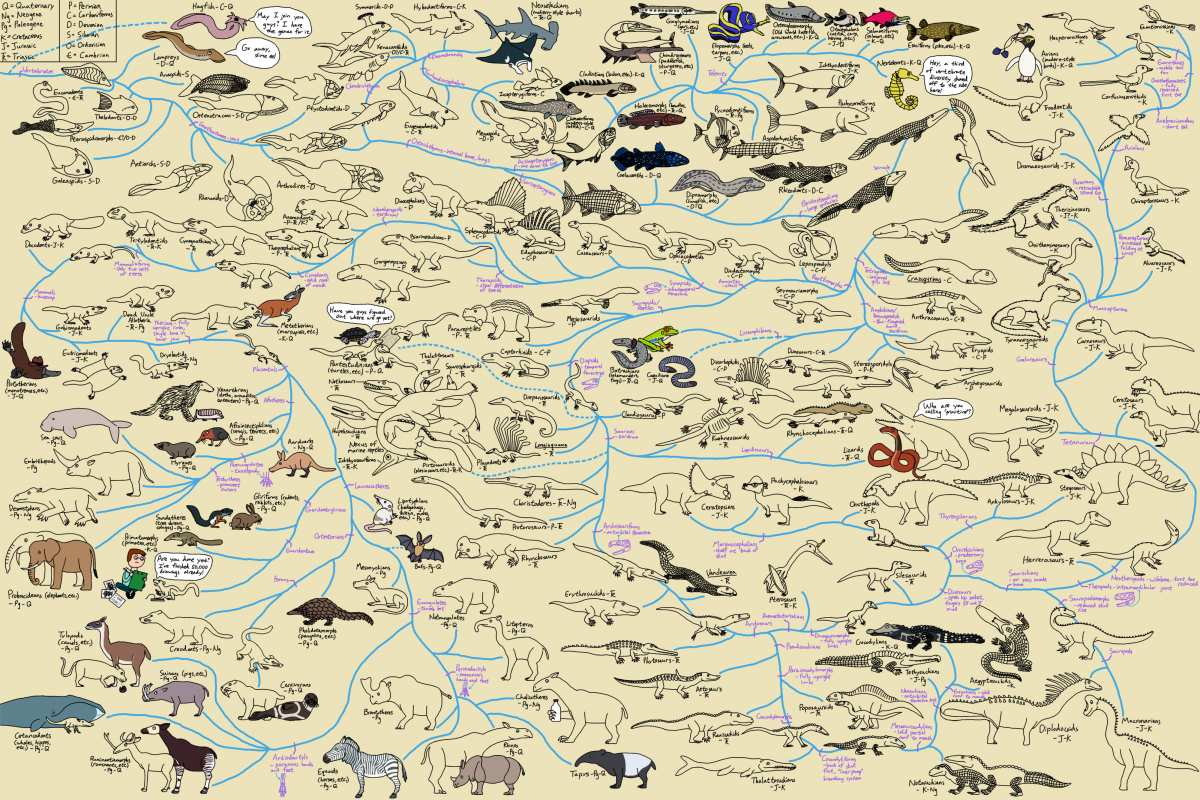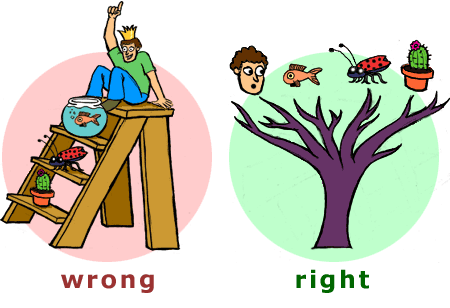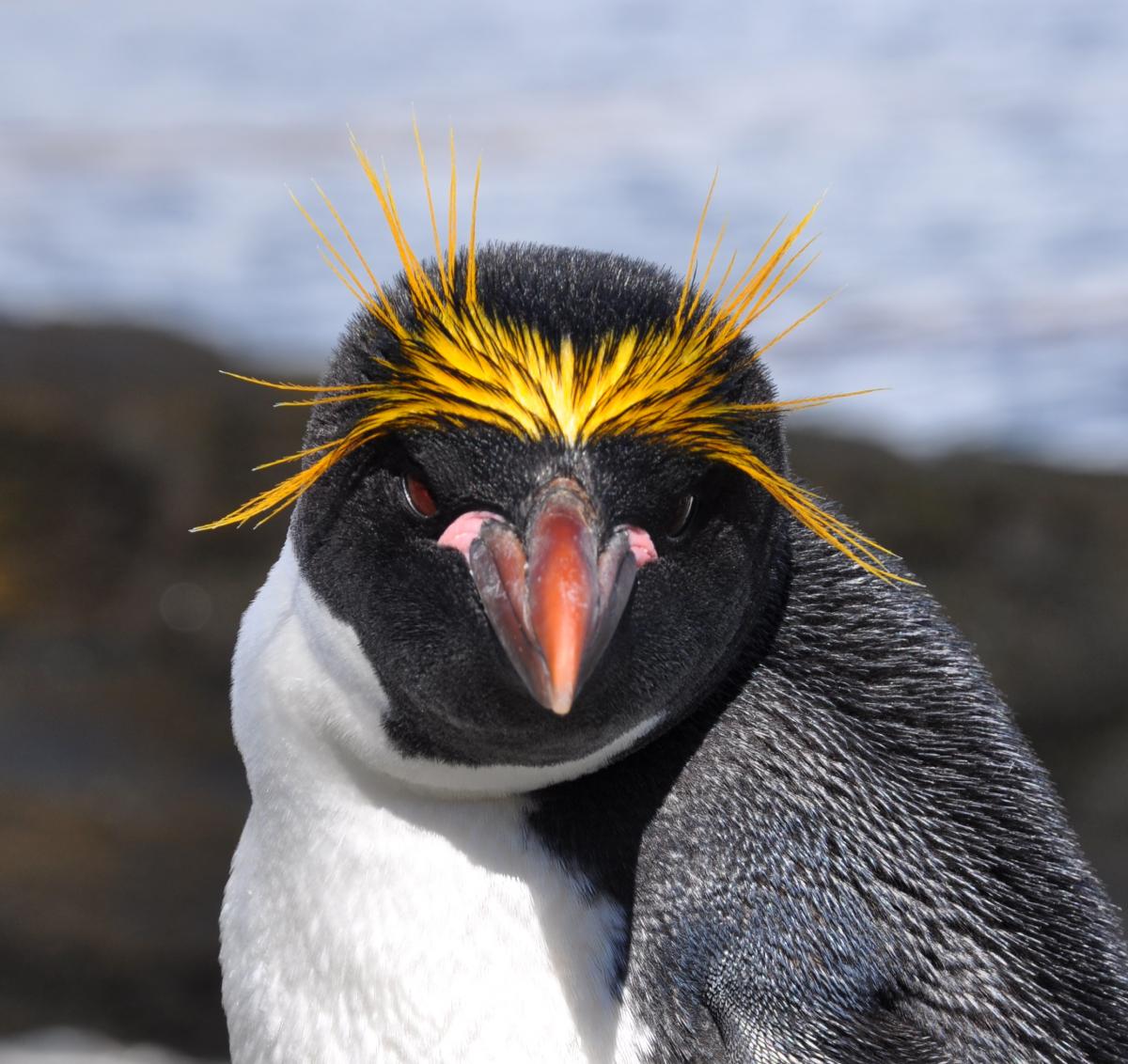Josh Rosenau sent this to Glenn Branch who sent it to me. What is “this”? It’s The Cartoon Guide to Vertebrate Evolution by artist Albertonykus (real name Albert Chen), an undergraduate student in geology at the University of Maryland. About this amazing creation, he writes on his Deviant Art Gallery page:
In which I discover the pain of drawing non-avemetarsalian archosauriforms (so many osteoderms!) and ungulates.
I like to think that the Big Vertebrate Tree is a useful resource, but it's not very user-friendly. As such, I have produced a simplified (yes, this is simplified) and more vibrant vertebrate cladogram.
Animals that have been colored in are extant species. Age ranges represent known fossil record and do not include ghost lineages. The animals placed along the branches (instead of at the tips) are all based on real taxa that approximate the likely ancestral morphology of certain groups, but I have left them unlabeled to prevent propagation of the misconception that we can identify whether said taxa are the actual ancestors of those groups. Absolutely nothing is to scale.
My apologies if I butchered the anatomy of or left out any of your favorite lineages. There were an immense number of groups and characteristics I included in my original outline that I had to cut out for considerations of space and time. Those who desire a more in-depth depiction at vertebrate phylogeny should consult the Big Tree and the technical literature.
Here, without further ado, it is (visit his page for a zoom-in-able version):

And here, without further ado, are my favorite ten things about this fabulous piece:
10. Um. There is a pink fairy armadillo in there. You all know how I feel about the pink fairy armadillo. I love it almost as much as I love…
9a. PANGOLINS and
9b. AXOLOTLS! (haven’t written a blog about them yet, but I really should. The avatar I use for everything else besides NCSE [Twitter, personal gmail, etc.] is an axolotl I call Susan.)
8. Apparently, duckbilled platypuses wear hats. (Is it because of this guy?)
7. The hagfish is feeling left out. It’s okay, hagfish, you’re a chordate and that’s what matters.
6. The mosasaur does not appreciate being called “primitive.”
5. Aww. The turtles are lost…still. But it looks like DNA is helping researchers figure out where you go. Don’t worry!
4. The chalicothere appears to be drinking a bottle of milk. It does do a body good, after all.
3. The seahorse is not amused by its lack of space on the tree. But remember, teleosts, trees are models and tree-artists can collapse and expand branches as they please!
2. The dromaeosaurids have feathers—because everyone who was not involved in making Jurassic World knows this is right.
1. Humans are in no way placed such that you could think they are the be-all-and-end-all of evolution. In fact, they are being made fun of by the Plesiadapis!
I became so enamored of this piece that I reached out to Albert to get his permission to upload it to our site and I also got to ask him a few questions...
SK: Did you consciously try to debunk some misconceptions about evolution with this tree?
 AC: I can think of at least two regarding evolution in general. In fact, you spotted one of them—the notion that there is a predetermined “end goal” of evolution. Biodiversity really is more of a tangled bank, not a straight line or a ladder! (I realize Darwin did not use the tangled bank as a direct metaphor for the tree of evolution, but it is an apt visual.)
AC: I can think of at least two regarding evolution in general. In fact, you spotted one of them—the notion that there is a predetermined “end goal” of evolution. Biodiversity really is more of a tangled bank, not a straight line or a ladder! (I realize Darwin did not use the tangled bank as a direct metaphor for the tree of evolution, but it is an apt visual.)
Another one is the idea that we can identify whether some fossil species was directly ancestral to another species (whether living or extinct). Most of the time, the fossil record just isn’t complete enough to tell us that. That doesn't mean fossils can’t give us insight into the ancestral anatomy of later organisms—finding the cousin to an ancestor can be the next best thing to finding the actual ancestor, after all. Throughout the cartoon I have drawn several animals that are placed along the branches in the tree instead of at their tips. These animals are meant to represent the probable ancestral body form of specific vertebrate groups and they are all based on real fossils. However, I have not labeled the ancestral forms with the names of these real animals, as a means to avoid implying that we can tell whether those animals are the ancestors of later groups.
There are more specific misconceptions I wanted to address with this graphic as well. For example, an external ear with an eardrum is present in almost all land vertebrates today, so one might assume that they all inherited this feature from their last common ancestor. As reasonable as this sounds, fossils and developmental data show that the tympanic ear evolved separately many times among land vertebrates!
SK: What inside jokes did I miss?
AC: You did a good job of finding many of them! Some are very obscure, so no one should feel bad about missing them. Here's a list:
- The red eyes of the salamander are a subtle reference to the web comic Black Mudpuppy by Ethan Kocak. The main character of this comic is the Aztec god Xolotl, who is depicted with red eyes. He has been banished into the body of a salamander and has to perform good deeds to regain his godhood.
- One of the mammal lineages is labeled “Dead Uncle Allotheria.” This references lyrics from the song “Mammal” by They Might Be Giants. Likely the only song I know that mentions allotherians!
- The human is a caricature of paleontologist Dr. Darren Naish. He blogs at Tetrapod Zoology and is currently working on a big book about vertebrate evolution. Since non-tetrapod vertebrates (fish) are not his specialty, he can be frequently seen complaining on Twitter about all the fish drawings he has to do.
- Speaking of Darren Naish, the caricature I drew was designed by my friend John Turmelle in the style of the cartoon Adventure Time. John and I produce a web comic along with artists Gareth Monger and Rebecca Groom known as TetZoo Time, featuring fictional counterparts of Darren and his colleagues. The milk-drinking chalicothere and the crown-wearing pterosaur in my cartoon are characters from our comic.
- The Carnotaurus (a ceratosaur) has another dinosaur’s head in its mouth, a reference to the (currently discontinued) web comic Parry and Carney by Mike Keesey. The comic’s entire plot consists of Carney the Carnotaurus biting off the heads of other animals, but it does a great job of putting new spins on the same punchline and contains numerous paleontological in-jokes.
- Since the namesake of my online pseudonym (Albertonykus) is an alvarezsaur, the alvarezsaur is a redrawing of my usual avatar.
 One of the representatives for modern birds is a penguin, because in the vertebrate paleontology course I took (which the main structure of my cartoon tree is based on), Dr. Thomas Holtz jokingly claimed that penguins were the pinnacle of dinosaurian evolution.
One of the representatives for modern birds is a penguin, because in the vertebrate paleontology course I took (which the main structure of my cartoon tree is based on), Dr. Thomas Holtz jokingly claimed that penguins were the pinnacle of dinosaurian evolution.
- The little guy eating the Oreo cookie next to the guanaco is a merycoidodontoid, sometimes known by the much easier-to-say name “oreodont.” Oreodont means “mountain tooth” and has no connection to Oreo cookies, but Dr. Thomas Holtz has nicknamed them “cookie monsters.”
- The modern turtle is a diamondback terrapin, our university mascot.
Thank you, Albert Chen, for making my day.
Are you a teacher and want to tell us about an amazing free resource? Do you have an idea for a Misconception Monday or other type of post? See some good or bad examples of science communication lately? Dro

